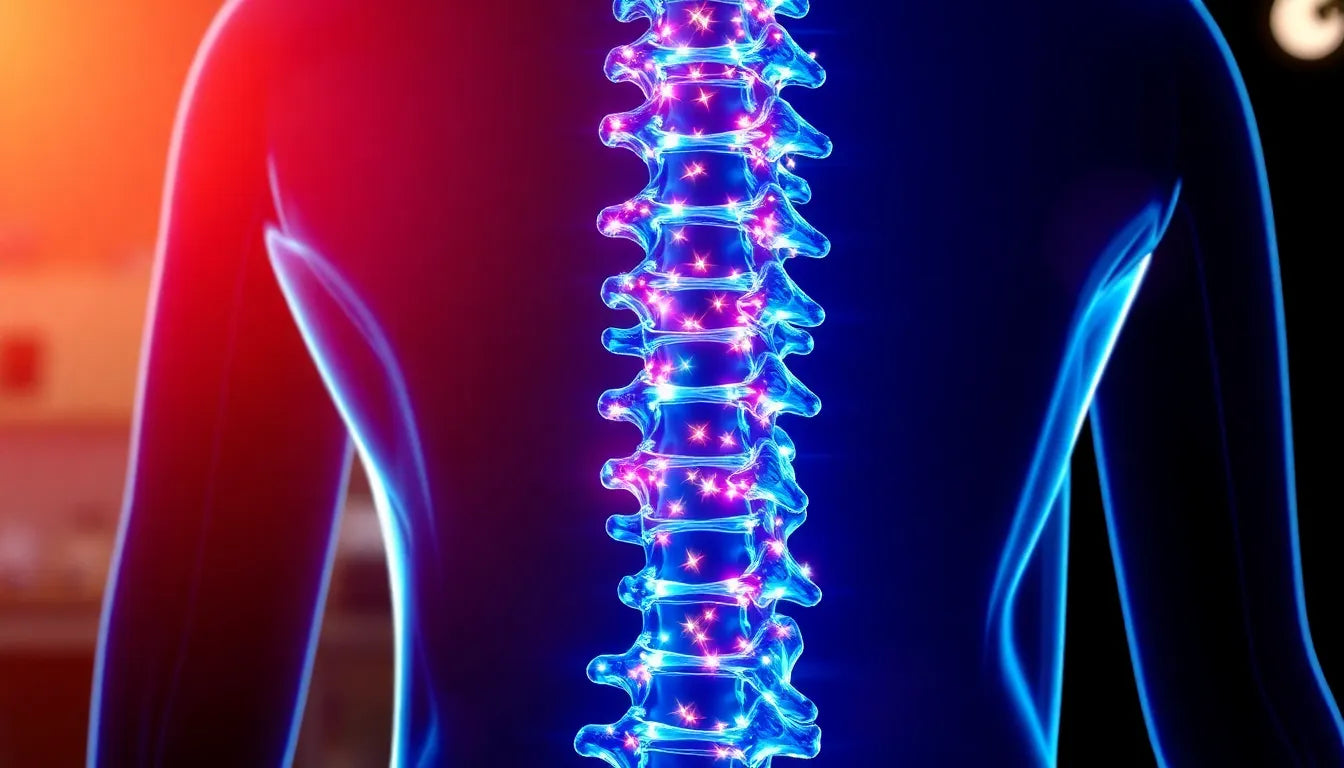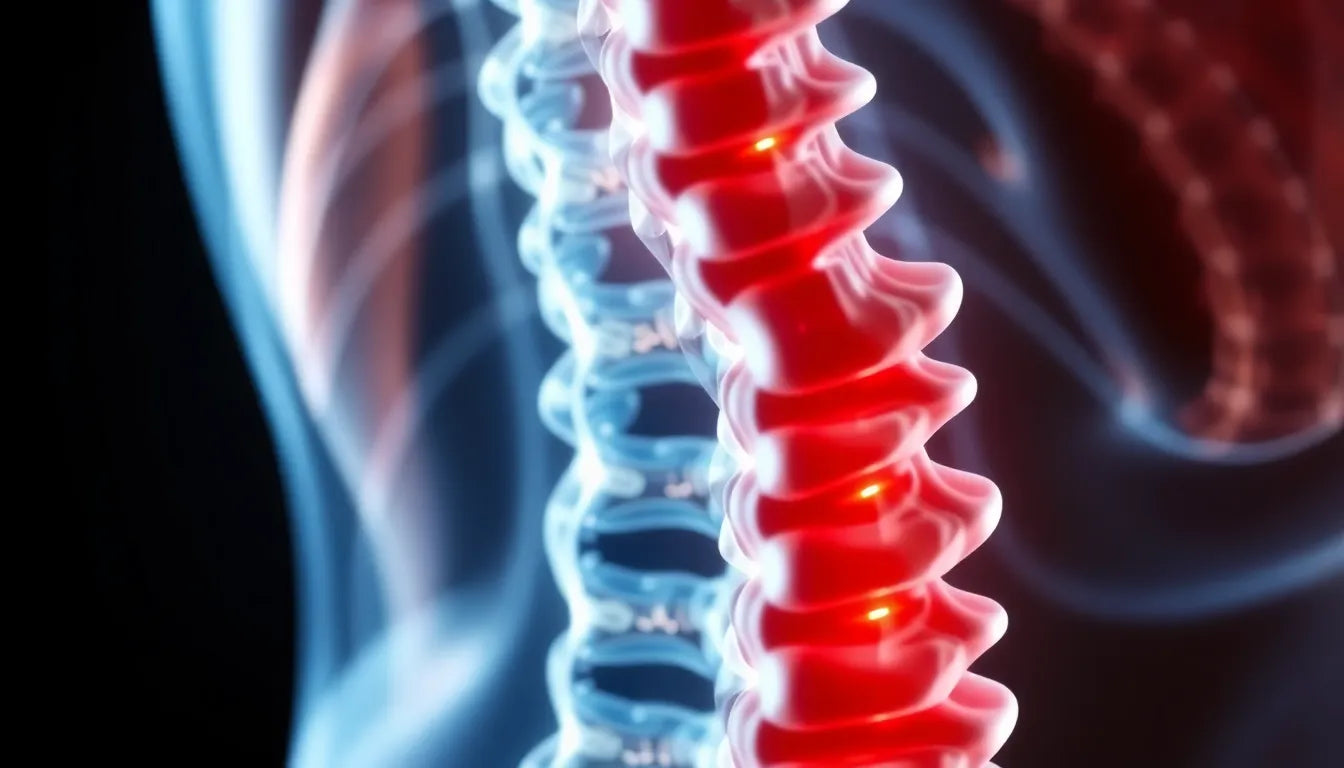Dealing with a herniated disc at the L5/S1 level can be a daunting experience, but understanding the nature of this condition is the first step towards effective management. A herniated disc occurs when the soft inner gel of a spinal disc pushes through a crack in the tougher exterior casing, often affecting nearby nerves. The L5/S1 segment, located at the base of the spine, is particularly significant due to its role in supporting the weight of the upper body and facilitating a wide range of movements, making it a common site for disc herniation.
importance of the L5/S1 region
The L5/S1 region is a crucial part of the lumbar spine, serving as a pivotal point for distributing loads and enabling flexibility. This area bears significant weight and stress, especially during activities like lifting, twisting, and bending. Its unique positioning and function make it susceptible to wear and tear, which can lead to disc herniation. As such, issues in this region are not uncommon and can have a profound impact on one's quality of life.
common challenges and symptoms
When a herniated disc occurs at the L5/S1 level, it can lead to a variety of symptoms that disrupt daily activities. Commonly, individuals experience sciatica, which manifests as sharp, shooting pain that travels down the leg. Other symptoms include persistent lower back pain, numbness, tingling, and muscle weakness in the legs or feet. These symptoms can make simple tasks like walking, sitting, or even standing for extended periods challenging, significantly affecting one's day-to-day life.
the goal of this post
This blog post aims to provide a comprehensive overview of the L5/S1 herniated disc, offering insights into understanding, managing, and alleviating the associated pain. By exploring the anatomy, symptoms, and available treatment options, we hope to equip you with the knowledge necessary to make informed decisions about your health and well-being. Whether you're dealing with this condition yourself or supporting a loved one, understanding the intricacies of an L5/S1 herniated disc is essential for effective management and recovery.
anatomy and causes of L5/S1 disc herniation
The L5/S1 spinal motion segment is a critical juncture in the lower back, where the fifth lumbar vertebra meets the first sacral vertebra. This segment is uniquely designed to provide stability while allowing a significant range of motion, making it essential for everyday movements such as bending and twisting. However, this flexibility also makes the L5/S1 region prone to wear and tear.
A herniated disc at this site often results from the degeneration of the spinal discs, which naturally occurs with aging. Over time, the discs lose water content, becoming less flexible and more susceptible to injury. Acute trauma, such as a fall or a sudden twist, can exacerbate this degeneration, leading to herniation. Lifestyle factors, including poor posture, obesity, and lack of exercise, also contribute significantly to the risk of developing a herniated disc at L5/S1.

symptoms and diagnosis of L5/S1 herniation
Symptoms of a herniated disc at L5/S1 can vary widely but often include pain, numbness, and weakness that radiates from the lower back down to the legs, commonly known as sciatica. For instance, individuals might find it difficult to perform activities that involve bending or lifting, and even simple tasks like sitting or standing for prolonged periods can become challenging.
Diagnosing a herniated disc typically involves a combination of physical examinations and imaging tests. During a physical exam, a healthcare provider may check for muscle strength, reflexes, and response to sensations. If a herniation is suspected, imaging tests such as MRI or CT scans are employed to confirm the diagnosis. These radiological assessments provide detailed views of the spinal discs and nerves, allowing for accurate identification of the herniated disc's location and severity.
treatment options for L5/S1 herniated disc
When it comes to treating a herniated disc at L5/S1, a range of options are available, tailored to the severity of the condition and the patient's overall health. Non-surgical treatments are often the first line of defense and include physical therapy, which focuses on exercises that strengthen the muscles supporting the spine and improve flexibility. Medications, such as non-steroidal anti-inflammatory drugs (NSAIDs) and muscle relaxants, can help manage pain and inflammation.
Additionally, lifestyle modifications play a crucial role in managing symptoms. Ergonomic adjustments, like using supportive chairs or optimizing workstation setups, can significantly reduce strain on the lower back. Weight management and regular low-impact exercises, such as swimming or walking, are also beneficial in alleviating symptoms and preventing further injury.
For cases where conservative treatments do not provide adequate relief, surgical options may be considered. These can range from minimally invasive procedures, such as microdiscectomy, which involves removing the herniated portion of the disc, to more traditional surgeries like spinal fusion. Surgery is generally reserved for severe cases where there is significant nerve compression or when other treatments have failed to improve symptoms.
Understanding the anatomy, causes, and treatment options for a herniated disc at L5/S1 is crucial for effective management. By exploring these aspects, individuals can make informed decisions about their health and work towards alleviating the pain associated with this condition. In the next section, we will delve into lifestyle and ergonomic solutions that can further aid in managing and preventing herniated disc issues.
Ergonomic and lifestyle solutions for managing L5/S1 herniated discs
Addressing the pain and discomfort of a herniated disc at the L5/S1 level involves not only medical interventions but also adopting practical lifestyle and ergonomic solutions. By making simple adjustments in daily routines, individuals can significantly alleviate symptoms and prevent further injury.
Ergonomic aids, such as supportive chairs and adjustable workstations, play a vital role in maintaining proper posture and reducing strain on the lower back. When sitting, ensure your chair supports the natural curve of your spine, and your feet rest flat on the floor. A well-positioned computer screen at eye level can also prevent neck and back strain. Incorporating these ergonomic principles into your workspace can make a noticeable difference in managing symptoms associated with a herniated disc.
Long-term management and prevention strategies
For those dealing with an L5/S1 herniated disc, long-term management is essential for maintaining quality of life and preventing recurrence. Regular exercise is a cornerstone of this approach, focusing on strengthening the core muscles that support the spine. Activities like yoga, pilates, and swimming are excellent for improving flexibility and building strength without putting undue stress on the back.
Weight management is equally important, as excess weight can increase the load on the spine, exacerbating symptoms. A balanced diet combined with regular physical activity can help maintain a healthy weight and reduce the risk of further disc herniation. Additionally, paying attention to posture during daily activities—whether sitting, standing, or lifting—can prevent unnecessary strain on the spine.
Frequently Asked Questions
What are the symptoms of a herniated disc L5/S1?
Symptoms include sciatica, lower back pain, numbness, and weakness in the legs. These symptoms can vary in intensity and may affect daily activities such as walking or sitting.
How is a herniated disc L5/S1 treated?
Treatment can range from physical therapy and medications to surgical interventions, depending on the severity of the condition. Non-surgical options are often explored first, focusing on pain management and physical rehabilitation.
Can ergonomic aids really help with a herniated disc?
Yes, ergonomic aids can support proper posture and reduce strain on the lower back, helping to alleviate pain. Adjustments like using supportive seating and optimizing workstations can make a significant difference in managing symptoms.
Is surgery always necessary for an L5/S1 herniated disc?
Surgery is typically considered when conservative treatments fail to relieve symptoms or if there is significant nerve compression. Most cases can be managed with non-surgical methods.
How long does recovery take from a herniated disc at L5/S1?
Recovery time varies; non-surgical recovery can take weeks to months, while surgical recovery depends on the procedure type. Following a tailored rehabilitation program can aid in a quicker recovery.
By incorporating these lifestyle and ergonomic strategies, individuals can effectively manage the pain of an L5/S1 herniated disc and work towards a healthier, more comfortable life. Understanding the condition, exploring treatment options, and adopting preventive measures are key steps in achieving long-term relief.


















